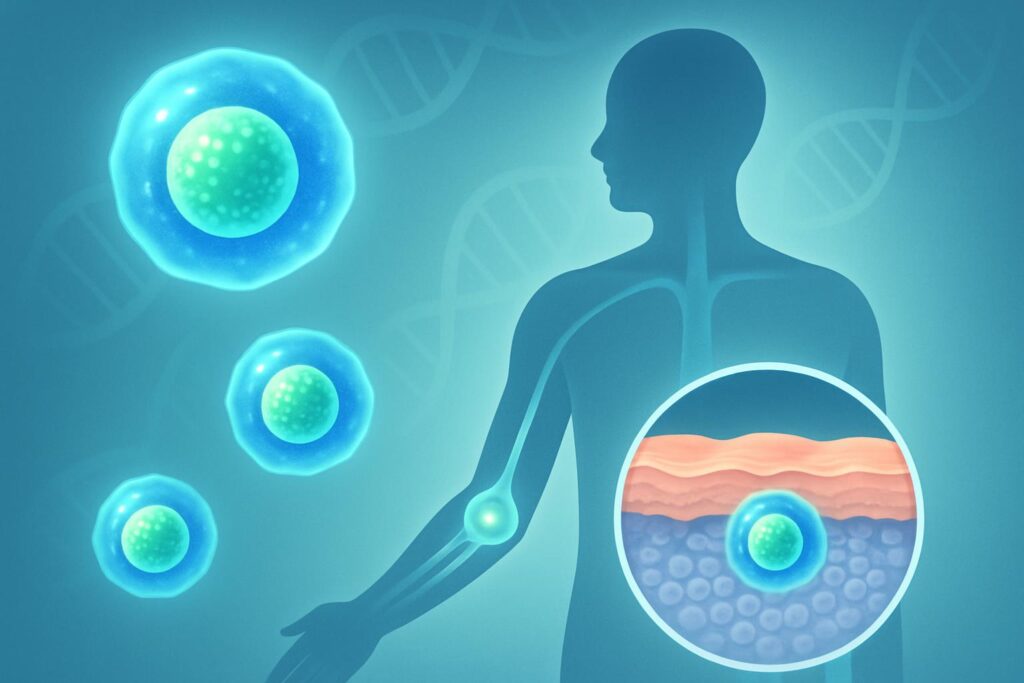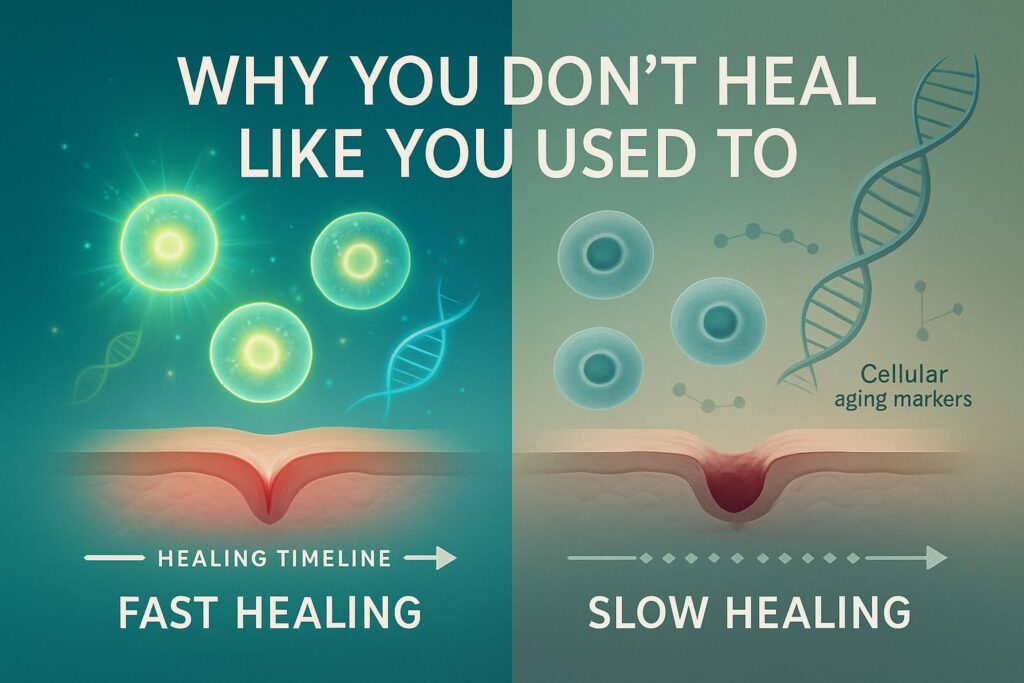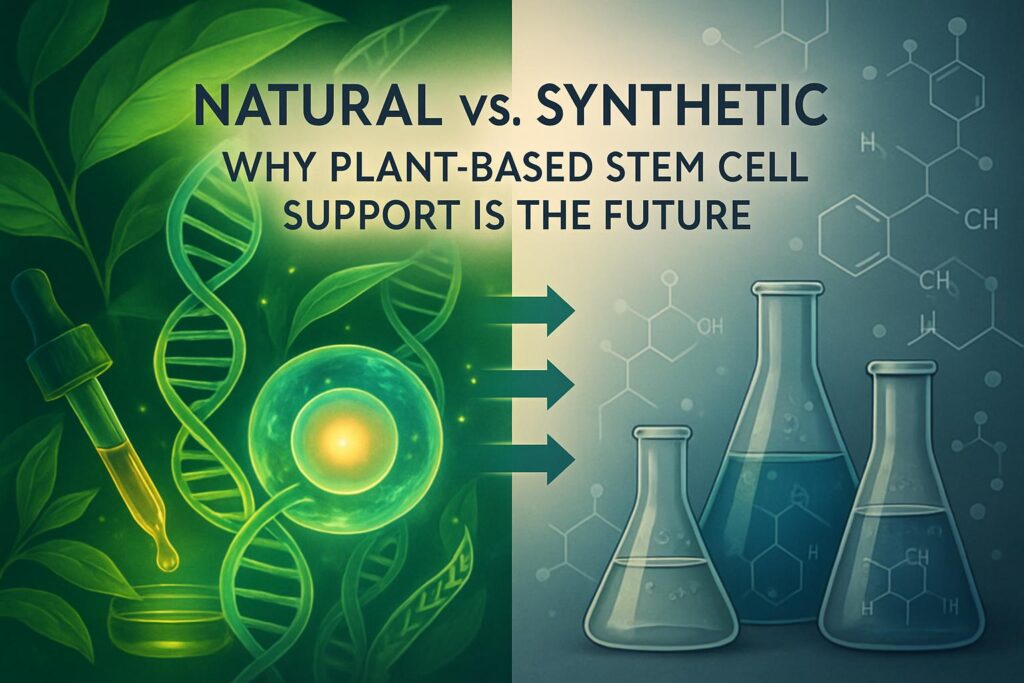If you’re reading this, chances are you or someone you care about is dealing with a condition known as osteonecrosis of the femoral head, often simply referred to as hip osteonecrosis. It’s a bit of a mouthful, isn’t it? But don’t worry, we’ll break it down together.
Imagine your hip joint as a well-oiled machine, with the femoral head acting like a smooth, round ball at the top of your thigh bone that fits perfectly into your hip socket. Now, osteonecrosis is like a spanner in the works. It’s a condition where the blood supply to the femoral head gets disrupted, leading to the death of bone tissue, or what we call necrosis. This can eventually lead to the collapse of the femoral head, much like a deflated ball, causing pain and affecting mobility.
The term ‘avascular necrosis of the femoral head‘ is another name for this condition, with ‘avascular’ referring to the lack of blood supply. It can be caused by a variety of factors, including injury, excessive alcohol use, or the use of high-dose corticosteroid medications. It’s a bit like a garden not getting enough water – without the necessary nutrients, the plants (or in this case, the bone cells) start to die off.
Now, you might be wondering about the treatment of osteonecrosis. Traditional options include non-surgical treatments like medications and physical therapy, and surgical treatments like core decompression, osteotomy, and in severe cases, total hip arthroplasty (or hip replacement surgery). But these treatments aren’t always effective, especially in the early stages of the disease. It’s like trying to fix that deflated ball with duct tape – it might help a bit, but it’s not a long-term solution.
This is where stem cell therapy comes into the picture. Stem cells are like the body’s raw materials – cells from which all other cells with specialized functions are generated. They’re like the seeds in our garden analogy – they have the potential to grow into many different types of cells, including bone cells. In particular, mesenchymal stem cells, often harvested from bone marrow, have shown promise in the treatment of osteonecrosis.
Stem cell treatment for osteonecrosis involves injecting these stem cells into the area of the femoral head affected by necrosis. The idea is that these stem cells can help to regenerate the damaged bone tissue, much like planting new seeds in a garden to replace the plants that have died off.
So, join us as we delve deeper into this exciting new treatment option. Whether you’re a patient with early-stage osteonecrosis looking for alternatives to surgery, or someone simply interested in the use of stem cells in medicine, we hope this article will provide you with some valuable insights.
Understanding Stem Cells

As we venture into the world of stem cells, let’s start by understanding what these cells are. Picture stem cells as the ultimate shape-shifters of the human body. They are unique cells that have the potential to develop into many different types of cells, from muscle cells to brain cells, much like a block of clay that can be molded into various shapes.
There are two main types of stem cells that we’ll focus on: embryonic stem cells and adult stem cells. Embryonic stem cells, as the name suggests, come from embryos and have the ability to transform into any cell type in the body. Adult stem cells, on the other hand, are found in small quantities in most adult tissues, like bone marrow or fat. These cells are a bit more limited and usually develop into the type of cell found in the tissue where they reside.
One special type of adult stem cells that we’re particularly interested in is mesenchymal stem cells. These cells are typically found in the bone marrow and can differentiate into a variety of cell types, including bone cells, cartilage cells, and fat cells. Think of them as the Swiss army knife of stem cells, with a range of useful tools at their disposal.
Stem cells play a crucial role in the body’s healing process. When a disease or injury strikes, stem cells spring into action to repair or replace damaged tissue. It’s like having a repair crew on standby, ready to fix any damages that occur.
Now, the potential of stem cells extends beyond the body’s natural healing process. In the field of regenerative medicine, scientists are exploring ways to harness the power of stem cells to treat various diseases and conditions, including osteonecrosis of the femoral head. The idea is to use these cells to regenerate damaged tissues, much like using fresh clay to repair a cracked sculpture.
An Overview
As we continue our journey, let’s delve into the concept of stem cell therapy. Imagine it as a kind of cellular magic trick. We take these special cells, which have the potential to become any type of cell, and guide them to transform into the specific cells we need to repair damaged tissues or organs. It’s like having a magic wand that can turn a frog into a prince, except in this case, we’re turning stem cells into bone cells or cartilage cells.
Stem cell therapies are currently being used in a variety of medical fields. For instance, it’s been a game-changer in the treatment of certain types of cancer, like leukemia and lymphoma. Here, stem cells are used to replenish the body’s supply of healthy blood cells after high-dose chemotherapy or radiation. It’s like replanting a garden after a storm has damaged the plants.
In the field of orthopedics, stem cell treatment is being explored as a potential treatment for a variety of conditions, including osteoarthritis, spinal cord injuries, and of course, osteonecrosis of the femoral head. The idea is to use stem cells to regenerate damaged or diseased bone and cartilage tissue. It’s like using a 3D printer to replace a broken part of a machine.
In the context of hip osteonecrosis, this therapy involves extracting stem cells, often from the patient’s own bone marrow, and then injecting these cells into the area of the femoral head affected by necrosis. The goal is for these stem cells to stimulate the growth of new bone cells and blood vessels, thereby helping to repair the damaged area. It’s like sending in a construction crew to repair a damaged building.
However, it’s important to note that while stem cell therapies show great promise, it’s still a relatively new field, and research is ongoing to fully understand its potential benefits and risks. But the early results are encouraging, and we’re excited to explore this further in the context of hip osteonecrosis.
Stem Cell Therapy and Hip Osteonecrosis
Now that we’ve got a handle on what stem cells are and how this therapy works, let’s dive into how this innovative treatment approach is being applied to hip osteonecrosis.
As we’ve mentioned before, hip osteonecrosis, or avascular necrosis of the femoral head, is a condition where the blood supply to the femoral head is disrupted, leading to the death of bone cells and potentially causing the femoral head to collapse. It’s like a tree that’s been cut off from its water source, causing it to wither and die.
Traditional treatments, such as medications, physical therapy, and surgical interventions like core decompression or total hip arthroplasty, can be effective, but they also have limitations and potential complications. It’s a bit like trying to fix a leaky pipe – sometimes a patch job can stop the leak, but other times you need to replace the whole pipe.
The idea is to use stem cells, particularly mesenchymal stem cells from bone marrow, to regenerate the damaged bone tissue in the femoral head. It’s like using a special fertilizer to help a withered tree come back to life.
Research studies on stem cell therapies for hip osteonecrosis have shown promising results. For example, some studies have found that injecting bone marrow stem cells into the necrotic area of the femoral head can improve symptoms and slow the progression of the disease, particularly in the early stages. It’s like catching the leak in the pipe early and fixing it before it causes too much damage.
Moreover, some case studies have reported significant improvements in patients with avascular necrosis who underwent stem cell therapy, including reduced pain, improved mobility, and better quality of life. It’s like seeing the tree not only come back to life, but thrive and grow stronger than before.
However, it’s important to note that while these results are encouraging, more research is needed to fully understand the potential benefits and risks of this form of therapy for hip osteonecrosis. But the future looks promising, and we’re excited to see where this journey takes us.
The Procedure
Let’s take a moment to understand the procedure itself. It’s a bit like planning a journey – knowing the route and what to expect can make the trip less daunting.
The first step in stem cell therapy is the collection of stem cells. In most cases, these are autologous cells, meaning they come from the patient’s own body. This is a bit like using seeds from your own garden to plant new flowers. The most common source of these cells is the bone marrow, specifically the mesenchymal stem cells found there. The bone marrow is typically harvested from the patient’s hip bone using a special needle in a process known as bone marrow aspiration.
Once the bone marrow is collected, it’s processed to concentrate the stem cells. This is a bit like panning for gold – you start with a lot of material and sift through it to find the precious nuggets.
The next step is the injection of these concentrated stem cells into the area of the femoral head affected by osteonecrosis. This is usually done using imaging guidance to ensure the cells are delivered to the right location. It’s like using a GPS to make sure you reach your destination.
After the procedure, patients may experience some discomfort at the site of the bone marrow aspiration and injection, but this usually subsides within a few days. It’s a bit like feeling sore after a workout – it can be uncomfortable, but it’s a sign that your body is responding.
The potential risks and complications of this procedure for hip osteonecrosis are generally low, but can include infection, bleeding, and reactions to anesthesia. It’s a bit like going on a hike – there’s always a risk of getting a scratch or a bug bite, but with proper precautions, these risks can be minimized.
In the weeks and months following the procedure, patients typically undergo physical therapy to help improve the function of the hip joint. It’s like rehabilitating a garden after a storm – it takes time and care, but with patience, you can see it flourish again.
Comparison with Other Treatments
As we navigate the landscape of treatments for hip osteonecrosis, it’s important to understand how stem cell therapy stacks up against other options. It’s a bit like comparing different routes for a journey – each has its own advantages, disadvantages, and scenery along the way.
Let’s start with non-surgical treatments, which include medications to relieve pain and reduce bone loss, and physical therapy to improve joint function. These treatments can be effective in managing symptoms, especially in the early stages of the disease. However, they don’t address the underlying issue of bone death. It’s a bit like using a band-aid to cover a wound – it can help with the pain, but it doesn’t heal the wound itself.
Surgical treatments for hip osteonecrosis include procedures like core decompression, where a portion of the inner layer of the bone is removed to relieve pressure and improve blood flow, and osteotomy, where the bone is cut and repositioned to move the damaged area away from the weight-bearing part of the hip. In severe cases, total hip arthroplasty, or hip replacement surgery, may be necessary. These treatments can be effective, but they also come with risks and potential complications, and recovery can take a long time. It’s a bit like taking a detour on a journey – it can get you where you need to go, but it might take longer and be more challenging.
Stem cell treatment offers a different approach. Instead of just managing symptoms or repositioning the bone, it aims to regenerate the damaged bone tissue. The goal is to stimulate the growth of new bone cells and blood vessels, thereby helping to repair the necrotic area of the femoral head. It’s a bit like using a map to find a new, more direct route to your destination.
Research has shown that stem cell therapy can be particularly beneficial for patients in the early stages of hip osteonecrosis, where the femoral head has not yet collapsed. In these cases, stem cells can potentially halt or even reverse the progression of the disease. It’s a bit like catching a leak in a pipe early and fixing it before it causes too much damage.
However, it’s important to note that while stem cell therapy is a promising treatment option, it’s not suitable for everyone. The decision to pursue this type of therapy should be made in consultation with a healthcare provider, taking into account the patient’s overall health, the stage of the disease, and the potential benefits and risks. It’s a bit like planning a journey – you need to consider all the factors before choosing the best route.
The Future of Stem Cell Therapy for Hip Osteonecrosis
As we look towards the horizon, the future of using stem cells for this condition appears promising. It’s like standing at the edge of a new frontier, excited about the possibilities that lie ahead.
Studies have shown that this treatment approach can improve symptoms, slow the progression of the disease, and in some cases, even stimulate the regeneration of damaged bone tissue. It’s a bit like finding a new, more effective fertilizer for our garden – the results are promising, but we’re still learning how to use it most effectively.
One area of ongoing research is the use of different types of stem cells for therapy. While mesenchymal stem cells from bone marrow are currently the most commonly used, researchers are exploring the potential of other types of stem cells, including adipose-derived stem cells and induced pluripotent stem cells. It’s like experimenting with different types of seeds to see which ones grow best in our garden.
Another exciting area of research is the combination of stem cell therapy with other treatments. For example, some studies are looking at the use of stem cells in conjunction with core decompression surgery, with the aim of enhancing the healing process. It’s a bit like combining different gardening techniques to get the best results.
FAQ
Q: What is osteonecrosis of the hip (ONFH)?
A: Osteonecrosis of the hip is a medical condition that occurs when there is a disruption of blood flow to the femoral head, resulting in bone death and tissue damage. This can lead to pain, limited mobility, and the collapse of the femoral head.
Q: What is stem cell therapy?
A: Stem cell therapy is a medical treatment that involves the use of stem cells to repair or replace damaged or diseased cells within the body. Stem cells have the ability to differentiate into a variety of different types of cells, making them a potentially valuable tool for treating a wide range of medical conditions.
Q: Can stem cell therapy be used to treat ONFH?
A: Yes, stem cell therapy is being investigated as a potential treatment for ONFH. Specifically, bone marrow mesenchymal stem cells (BMSCs) have shown promise in preclinical and clinical studies for the treatment of ONFH.
Q: How do BMSCs work in the treatment of ONFH?
A: BMSCs have the ability to differentiate into bone-forming cells and promote the growth of new blood vessels. When injected into the affected area, BMSCs can potentially help to repair damaged bone and tissue and promote the growth of new, healthy bone.
Q: What is the success rate of stem cell therapy for the treatment of ONFH?
A: The success rate of stem cell therapy for the treatment of ONFH is still being studied, and results may vary depending on the individual case and the stage of the condition. However, early clinical studies have shown promising results, with some patients experiencing significant improvements in pain and mobility following treatment with BMSCs.
Q: How is stem cell therapy administered for the treatment of ONFH?
A: Stem cell therapy for the treatment of ONFH can be administered via injection directly into the affected area. The stem cells may be sourced from the patient’s own bone marrow, or from other sources such as umbilical cord tissue.
Q: Is stem cell therapy a safe treatment option for ONFH?
A: The safety of stem cell therapy for the treatment of ONFH is still being studied. Early clinical studies have shown few adverse effects associated with the use of BMSCs, but further research is needed to fully assess the safety and efficacy of this treatment option.
Q: What is the best stage of ONFH for treatment with stem cell therapy?
A: Stem cell therapy may be most effective in the early stages of ONFH, before significant bone damage and tissue loss have occurred. However, further research is needed to determine the ideal timing for this treatment.
Q: Can stem cell therapy be combined with other treatments for ONFH?
A: Yes, stem cell therapy may be combined with other treatments for ONFH such as decompression surgery or corticosteroid therapy. This may help to improve the effectiveness of treatment and promote better outcomes for patients.
Q: What are the potential risks associated with stem cell therapy for ONFH?
A: The potential risks associated with stem cell therapy for ONFH may include infection, allergic reactions, and the development of abnormal tissue growth. However, these risks are generally considered to be low, and are outweighed by the potential benefits of this treatment option.
Conclusion
As we conclude our exploration of stem cell therapy for hip osteonecrosis, let’s take a moment to reflect on what we’ve learned. It’s a bit like coming to the end of a journey – we’ve covered a lot of ground, and hopefully, we’ve gained some valuable insights along the way.
We’ve learned that hip osteonecrosis, or avascular necrosis of the femoral head, is a condition where the blood supply to the femoral head is disrupted, leading to the death of bone cells and potentially causing the femoral head to collapse. It’s a bit like a tree that’s been cut off from its water source, causing it to wither and die.
We’ve explored the traditional treatments for hip osteonecrosis, including medications, physical therapy, and surgical interventions like core decompression and total hip arthroplasty. While these treatments can be effective, they also have limitations and potential complications. It’s a bit like trying to fix a leaky pipe – sometimes a patch job can stop the leak, but other times you need to replace the whole pipe.
We’ve delved into the world of stem cells and stem cell therapy, learning about the potential of these unique cells to regenerate damaged tissues and organs. In the context of hip osteonecrosis, stem cell therapy offers a promising new approach to treatment, particularly for patients in the early stages of the disease. It’s a bit like using a map to find a new, more direct route to your destination.
Looking ahead, the future of stem cell therapy for hip osteonecrosis is exciting. Current research is encouraging, and ongoing studies are exploring new ways to enhance the effectiveness of this treatment approach. It’s a bit like standing at the edge of a new frontier, excited about the possibilities that lie ahead.
However, it’s important to remember that while stem cell therapy is a promising treatment option, it’s not suitable for everyone. The decision to pursue stem cell therapy should be made in consultation with a healthcare provider, taking into account the patient’s overall health, the stage of the disease, and the potential benefits and risks. It’s a bit like planning a journey – you need to consider all the factors before choosing the best route.
We hope this exploration of stem cell therapy for hip osteonecrosis has been informative and helpful. As we continue to learn more about this exciting field, we look forward to sharing more insights with you. So, stay tuned for more updates on this fascinating journey into the world of stem cell therapy.



